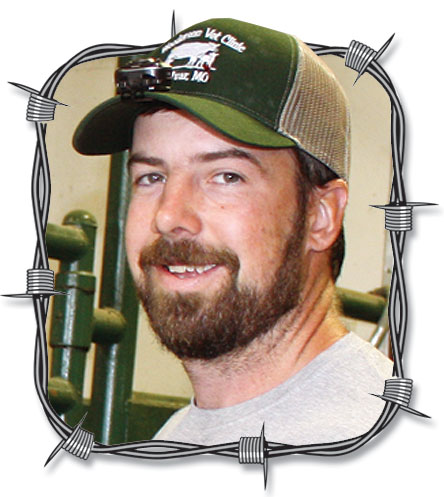I don’t know who needs to hear this but don’t forget to check that last “spring calving” cow that still hasn’t had a calf. It’s easy to forget about those gals when we get into the hayfield, on the brush hog or on summer vacations. This is also when we tend to see the worst caving issues.
Pregnancy exams (preg checks) are the best way of determining if a cow is pregnant and figuring out who will lag behind in the calving season. These late calving cows are good candidates for the cull list as they will have smaller calves at weaning time and always will until they eventually come up open because most cows won’t have two calves less than a year apart.
Pregnancy exams are easy to have done with the help of your local vet; the hard part is having a plan to utilize the results. Unless you are using the results to make business decisions, you’re not helping yourself. The plan is different for every operation, but every operation should have a plan.
For the most part, farmers will choose to simply sell the open cows and, if they don’t have too many of those, the cows that will calve late in the season. Some will elect to roll any opens and possibly their late cows into the next calving season. Option 3 is to retain these open cows, put the bull back with them and mark them to sell when they are pregnant.
The marketing strategy used is somewhat dependent on the market Cows right now are selling for around 68 cents a pound. That means a 1,200- pound cow is worth $816, which is enough to justify the “sell your opens now” plan. The cow turned back with the bull with the intent to sell when pregnant costs you an extra $200 because it costs $600 to feed a cow for a year. Let’s say you get 70 percent of those cows pregnant. The pregnant cows sell for $1,200, and the ones that are still open have gained 50 pounds; if the slaughter market stays steady, they’re worth $850. That makes the average price for those cows $1,095 (you have $1,016 in them). Option 3 is the hardest to calculate because it involves tracking that cow’s production over the next few years to see if she pays herself off. A 500-pound calf will, on overage, sell for $750. If it costs $600 to feed a cow for a year, it will take her three years, without coming up open, to pay you back for the six months you lost. This makes keeping any cow older than 5 a money-losing decision, and any cow that comes up open or late is at high risk for doing the same thing again in less than three years.
The raw numbers on the profitability of having a vet do pregnancy exams on your cows are staggering as well. The cost to the farmer is $400, plus a farm trip fee of $60 (based on Wooderson Vet Clinic prices). The farmer finds out nine cows are open, and one is in the first period when all the others are in the second. The farmer decides to sell these 10 cows. Had the farmer not examined his cows for pregnancy it would have been 240 days before he received this information, and it would have cost he/she $394.5 per cow (based on the example earlier). Multiplied by 10 cows, that is $3,945 that could have been saved by paying $460 to the vet, a profit of $3,485.
The beef cattle industry is a hard one to make money in. All kinds of costs, both expected and unexpected, make it necessary to take advantage of every management advantage you can get. There are a seemingly infinite amount of management practices that can be implemented to make your operation more profitable, but pregnancy exams and the resulting sale of cull animals is the first one that needs to be implemented.
Dr. Charlie Robinson, DVM is a partner at Wooderson Vet Clinic in Bolivar, Mo.





